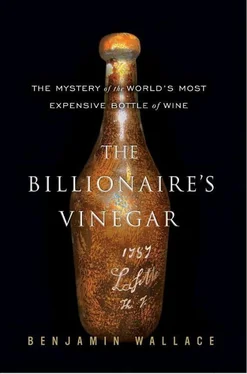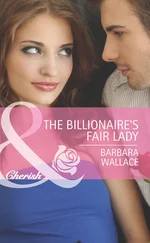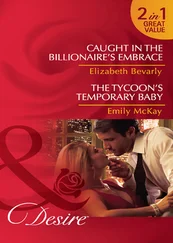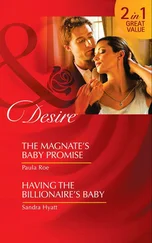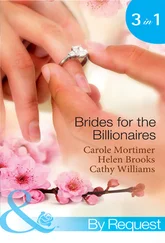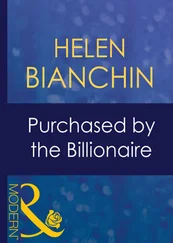There are certain truisms about how wine ages. Big bottles are believed to age more slowly than small ones, because the ratio of oxygen to liquid is lower. Wine in cooler cellars ages more slowly than wine in warmer ones. More-tannic wines take longer to come around than more-supple ones. High-alcohol, high-sugar, and high-acid wines—fortified wines such as Port and Sherry, sweet wines like Sauternes and Tokay, the deliberately heated Madeira, acidic wines including certain Rieslings—all live longer than table wines because their strength inhibits the development of bacteria.
The genius of Madeira, a sea turtle of a wine with an almost infinite lifespan, is that oxidation is the goal. “You take a wine and oxidize the crap out of it,” in the words of Andrew Waterhouse, a chemist at the University of California, Davis. Madeira, like many kinds of wine, was discovered by accident, when ships’ captains noticed that barrels of wine from the eponymous Portuguese island that had gone around the world in their holds, with lots of heat and sloshing around, tasted pretty good. Soon this was done deliberately, and it became common for advertisements for barrels of Madeira to boast of the miles they’d traveled, the distant ports seen. Later, and more cost-effectively, white wine would be deliberately cooked for between three months and a year, either naturally in tin sheds under the tropical sun, by pumping hot water through steel pipes in tanks containing Madeira, or by putting Madeira-filled casks in heated rooms. It was impossible to ruin something that had, essentially, perfected the taste of ruin. Further oxidation is simply making a Madeira more like itself. (Apparently inspired by Madeira’s example, in the nineteenth century the manager of Château Lafite, a Monsieur Goudal, sent fifty bottles of the 1846 Lafite on a sea voyage around the world in an effort to accelerate their aging.)
With still wines, you cannot stop the undesirable process of oxidation, you can only delay it. Therefore the young bottles of wine with the greatest chance of achieving an exalted state are those with both preservatives (tannins) and potential (phenols). The red wines of Bordeaux’s left bank are among the most ageable because their predominant grape, cabernet sauvignon, contains extremely high levels of phenols and tannins. The bottles that have proven, over long history, to be considered the greats—1870 Latour, say—were undrinkable in their youth.
Because the tannins serve as an antioxidant, once they start clumping together and falling out of the wine, this line of defense against further oxidation begins to give way. At this point a wine’s fruity character begins to disappear, and the wine is said to “lose its fruit.” Eventually, a wine becomes so leached of its original vitality that it is called faded at best, but more likely “maderized” or something worse. The Forbes bottle, two hundred years old and recently exposed to light, heat, and possibly oxygen, was almost certainly something worse.
THE FORBESES HAD not planned to taste the wine. Now, clearly, no one would. The question of how a red wine from the Jefferson-bottle cache might taste would have to wait for another of the bottles to provide an answer. But for Rodenstock and Broadbent, the stakes had heightened, and Broadbent was worried. In the six months since the Forbes sale, questions about the bottle had multiplied. Answers to at least some of them were promised by a tasting on June 3, 1986, when a 1787 Branne-Mouton from the cache was opened at Château Mouton-Rothschild.
In 1985, few wines were as highly priced in the market as Mouton-Rothschild, but in 1787, when it was known as Branne-Mouton, the vineyard had been mentioned only in passing in Jefferson’s diaries, and then as a third -tier property. In the 1855 Classification, it was named a second growth. The French branch of the Rothschild family bought the vineyard in the middle of the nineteenth century, but it was the magnetic and multitalented Philippe de Rothschild (champion race-car driver, film producer, translator of Elizabethan drama into French), who took it to new heights of excellence and fame. He led Bordeaux in being the first to château-bottle his entire production (in 1923), brought a marketing touch unique in the fusty Médoc when he began using a famous artist—Braque, Picasso, Warhol—to design each year’s label, and won the only significant change ever made to the 1855 Classification when he persuaded the French government to elevate Mouton to first growth in 1973. He also kept up the long-standing rivalry between Mouton and his cousins’ Lafite, famously serving curry with the rival wine at a luncheon, a tactic certain to obliterate any subtleties of Lafite’s taste. Rothschild’s insistence on setting the opening price for Mouton’s new vintages higher than Lafite’s had been a primary cause of the early-1970s price spiral in Bordeaux.
Mouton had been one of the so-called “wines of the vintage” in 1982, a bumper year that brought unprecedented speculation into the Bordeaux market. Rodenstock had visited the château in 1984 and written a long article about Mouton for Alles über Wein . The presence of Mouton among the Jefferson bottles was an extraordinary stroke of fortune.
The idea for the event at Château Mouton-Rothschild was Rodenstock’s. As with the Yquem opened at Yquem the year before, he liked the notion of bringing this Mouton home to taste in its birthplace with the great baron himself. The bottle had been brought to the château by hand, six weeks earlier, and left standing upright, to allow enough time for the sediment to settle to the bottom. It had been locked away in the baron’s personal cellar, to avoid a cellar staff person’s reflexive laying of the bottle on its side. Just to make sure, a sign was placed next to it enjoining anyone from moving it. The château had the best collection in the region of nineteenth-century Bordeaux, but the oldest bottle of its own wine was an 1853 (the year the Rothschilds bought the property), and it had been acquired just a few years earlier, at Christie’s.
Among the nineteen tasters who attended were several of Hardy Rodenstock’s German cronies, including Mr. Cheval Blanc, Herr Pétrus, and Magnum Uwe. Michael Broadbent arrived just as the tasting was beginning, wearing gray flannel slacks, a blue blazer, and, shrewdly, a Mouton necktie. He promptly began retelling the story of the Forbes cork fiasco.
The group crossed the gravel walkway to the cellar slowly and solemnly, as at a funeral. Leading the way in blue overalls and Adidas sneakers, a candle in his hand, was the aged cellarmaster Raoul Blondin, lower lip petrified in a shrugging Gallic pffftttt . Blondin said that the wine would be “passé. Zéro.”
The bottle was in the shape of a flask, with shoulders in a Burgundy-style slope. Etched in the glass were “Branne Mouton 1787” and “Th.J.” A wax bulb sealed the top. There was significant ullage, the wine’s surface nearly three inches below the bottom of the cork. Everyone looked intently at the bottle. Broadbent opened his notebook and began recording his impressions. “Level?” he said aloud. “Ah, mid-shoulder. Very interesting.”
Rodenstock had brought with him Ralf Frenzel, the young sommelier of Die Ente in Wiesbaden, who was a kind of personal wine steward and surrogate son to him. Frenzel carried the bottle upstairs and out onto a gravel path near the original patch of vineyard called La Motte. He placed it in a bowl on the ground, crouched in front of it, and gently began tapping at the wax seal with an antique sommelier’s hammer given him by Rodenstock. Though only in his twenties, Frenzel knew what he was doing. The soft percussion of his tool dislodged the cork, which plopped into the wine.
Then came the sound of glass cracking. A lateral hairline fissure opened, a few inches from the bottle’s base. Wine seeped out into the bowl.
Читать дальше
